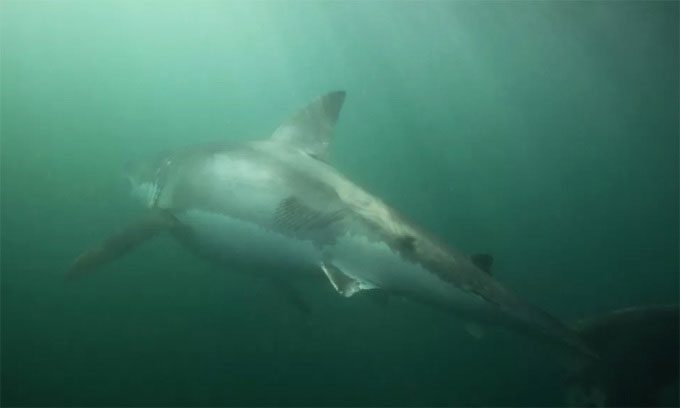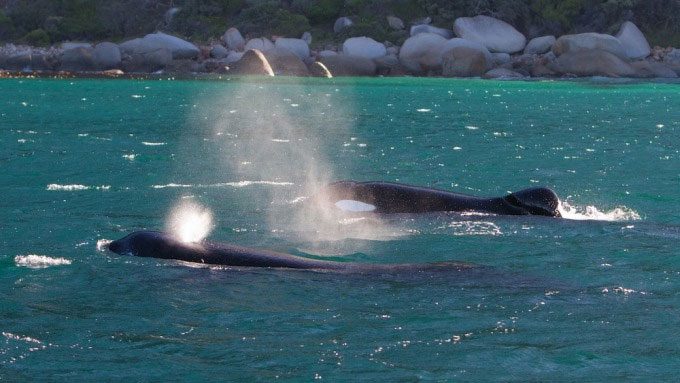A 2017 study revealed that a great white shark may have encountered a pair of notorious orcas known for eating shark livers.

A 3.5m female great white shark injured after an encounter with orcas. (Photo: Alessandro De Maddalena).
A 3.5m female great white shark may have survived an attack by the infamous “serial killer” orcas – Port and Starboard – and bears a large scar on its side, Live Science reported on March 27. Alessandro De Maddalena, a former associate professor of vertebrate marine biology at the University of Milano-Bicocca in Italy, photographed the shark near Seal Island, off False Bay, South Africa, during an exploratory dive in 2017.
Years later, De Maddalena examined the photos more closely and noticed that the great white shark had several scars resembling tooth marks from orcas. His analysis indicates that the orcas attempted to grab the shark from above, and the scratch marks suggest that the shark experienced significant impact. The new study was published in the journal Marine Biological Journal.
False Bay was once a bustling habitat for great white sharks. However, in 2017, the situation began to change as the population of great whites gradually declined. By 2019, sharks seemed to have completely abandoned this crucial seal-hunting location. Although their disappearance could be attributed to multiple factors, scientists believe that a primary reason is the presence of the orca pair named Port and Starboard, which hunt sharks in the area for their livers.
Finding a great white shark that survived an early attack may help researchers establish a timeline for when the orca pair perfected their formidable hunting technique.

The pair of orcas Port and Starboard hunting for fresh shark livers. (Photo: Alison Kock).
Despite the recent spate of attacks, De Maddalena believes that orcas cannot easily tear apart great white sharks. “I think the reality is much more complex. Outside of South Africa, only two instances of orcas preying on great whites have been recorded to date. This indicates that great whites are not a common prey for orcas,” he stated.
Great white sharks have an incredible ability to heal from injuries. This is a result of evolution and adaptation. De Maddalena suggests that the shark’s wounds may have only developed a few days or weeks prior. “Perhaps the attack failed because the orcas are still refining their attack techniques. Or simply, like any predator, they can often fail,” he added.
Port and Starboard are currently conducting their most dangerous killing spree yet, as experts reported discovering up to 19 sharks washed ashore in just one day at the end of February. “This is the largest number of sharks killed by orcas in this area in a single event. There could be even more sharks that did not wash ashore,” said Alison Towner, a marine biologist at Rhodes University.




















































